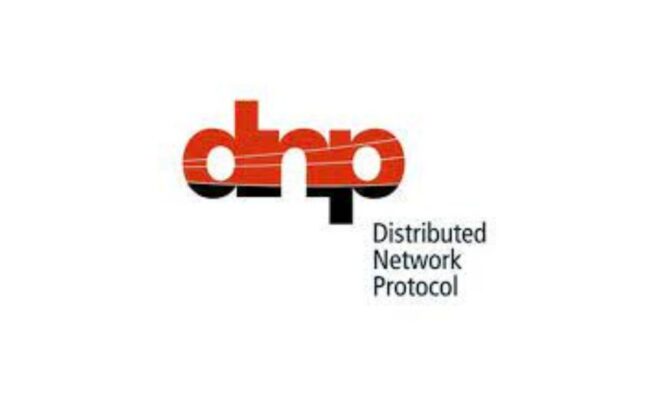In the world of industrial automation and SCADA systems, the DNP3 protocol (Distributed Network Protocol 3) plays a critical role in enabling secure and reliable data communication between devices.
Whether you’re a utility engineer, cybersecurity analyst, or automation developer, decoding DNP3 frames is essential for troubleshooting, compliance, and interoperability.
Manually decoding DNP3 hexadecimal data is time-consuming and error-prone. That’s why we built the Online DNP3 Decoder Tool — a fast, browser-based solution that simplifies DNP3 frame analysis without the need for complex software.
This guide covers everything you need to know about DNP3, why decoding it matters, and how to use our DNP3 decoder effectively.
Table of Contents
What is DNP3 Protocol? A Quick Overview
DNP3 (Distributed Network Protocol 3) is a robust communication protocol used in SCADA, electric utilities, oil & gas, and water management systems.
Standardized under IEEE 1815, it ensures reliable communication between master stations (like control centers) and outstations (such as RTUs or IEDs).
Key Features of DNP3
- Layered Architecture: Application, data link, and physical layers for structured communication.
- Polling & Unsolicited Responses: Supports both request-response and event-driven data updates.
- Secure Authentication (SAv5): Protects against cyberattacks via challenge-response mechanisms.
- Object-Oriented Data Model: Uses groups and variations for binary, analog, and counter data types.
However, decoding raw DNP3 frames — often in hexadecimal format — requires understanding complex elements like link headers, transport controls, CRCs, and function codes.
Our DNP3 decoder automates this process for you.

Understanding the DNP3 frame format is essential when using any DNP3 decoder tool to interpret link-layer data and validate CRC accuracy.
Why Use an DNP3 Frame Decoder?
Manually interpreting DNP3 hex frames involves detailed analysis of control bits, flags, and CRC blocks.
Our DNP3 decoder eliminates that complexity by automatically parsing frames into human-readable structure.
Common Use Cases:
- SCADA Troubleshooting: Detect communication errors or unsolicited messages.
- Cybersecurity Analysis: Identify authentication failures or unauthorized control commands.
- Protocol Compliance Testing: Verify frame structure against IEEE 1815-2012 standards.
- Education & Training: Teach students about DNP3 field formats and object variations.
Unlike offline analyzers, our DNP3 decoder tool works instantly in your browser — no installation or registration required.
Features of Our DNP3 Decoder Tool
Our DNP3 decoder tool supports the complete DNP3 specification and advanced frame handling features.
Key Features:
- Hexadecimal Input: Paste your DNP3 frame (e.g.,
05640A44030004007CAEC0F08282008E66) for instant decoding. - CRC Validation: Validate frame integrity automatically.
- Multi-Frame Reassembly: Reconstruct large messages split across multiple frames.
- Detailed Breakdown: Decode link (DIR, PRM, FCB), transport (FIR, FIN), and application headers (READ, WRITE, RESPONSE).
- IIN & Object Parsing: Display object groups (Binary Input, Analog Input, Counters) and interpret event flags.
- CTO Time Support: Handle Common Time Objects for relative timestamp conversion.
- Cross-Platform: 100% web-based; works on any device.
Benefits Over Other Tools
- No downloads or paid licenses
- Instant analysis directly in your browser
- Based on IEEE 1815 standard
- Works with frames captured from Wireshark or field devices
This makes it one of the most accurate and user-friendly DNP3 decoders online.
How to Use the DNP3 Parser Tool
Getting started with our DNP3 frame decoder is straightforward. Here’s a simple tutorial:
- Enter Hex Data: Paste the hexadecimal DNP3 frame into the textarea. For example, use a sample like “05640A44030004007CAE C0F08282008E66”.
- Toggle Options: Check the “Validate CRC” box if you want to verify checksums (recommended for accuracy).
- Decode: Click the “Decode” button. The tool will process the input and display a structured table.
- Review Results: See breakdowns of headers, controls, IIN, and objects. For multi-frame inputs, it reassembles automatically.
- Clear and Repeat: Use the “Clear” button to start over.
Pro Tip: For complex captures (e.g., from Wireshark), extract the hex frame and input it directly. If you encounter errors like “Missing initial FIR segment,” ensure your hex includes all frames segments.
This DNP3 parser tool supports various variations, from binary events with relative times to analog inputs with flags, making it a versatile DNP3 protocol decoder.
FAQs About Our DNP3 Decoder
What is a DNP3 Decoder?
A DNP3 decoder is a tool that translates hexadecimal DNP3 frames into readable formats, breaking down headers, functions, and data objects for analysis.
Is Your DNP3 Decoder Free?
Yes! Our free Online DNP3 decoder has no hidden fees or registrations – just paste and decode.
Does It Support DNP3 Secure Authentication?
Absolutely. It decodes authentication objects (Group 120) and related variations for SAv2 and SAv5.
Can I Decode Multi-Frame DNP3 Messages?
Yes, our tool automatically reassembles multi-frame data for complete parsing, a feature not always available in basic DNP3 decoders.
How Accurate Is the Tool?
Based on IEEE 1815-2012 specs, it includes CRC validation and detailed flag interpretations for 100% accuracy.
Conclusion: Start Decoding DNP3 Frames Today
The DNP3 Decoder Tool is the fastest, easiest, and most accurate way to analyze DNP3 protocol data.
From troubleshooting SCADA systems to decoding authentication frames, this online decoder simplifies complex analysis — all in your browser.
Ready to decode? Paste your hex frame below and click “Decode” to get started.
—
Support & Feedback
Having trouble decoding a frame, or noticed unexpected output?
We’re here to help!
When contacting support, please include:
- Decoder tool name (e.g., DNP3 Decoder, Modbus RTU Decoder, IEC-101 Decoder, IEC-104 Decoder)
- Description of the issue
- Frame/hex example or error message you encountered
(copy the frame you tested and any error code shown)
This information helps us quickly identify the issue and improve the tool for everyone.
Contact Support: SCADA Protocols Support Page

